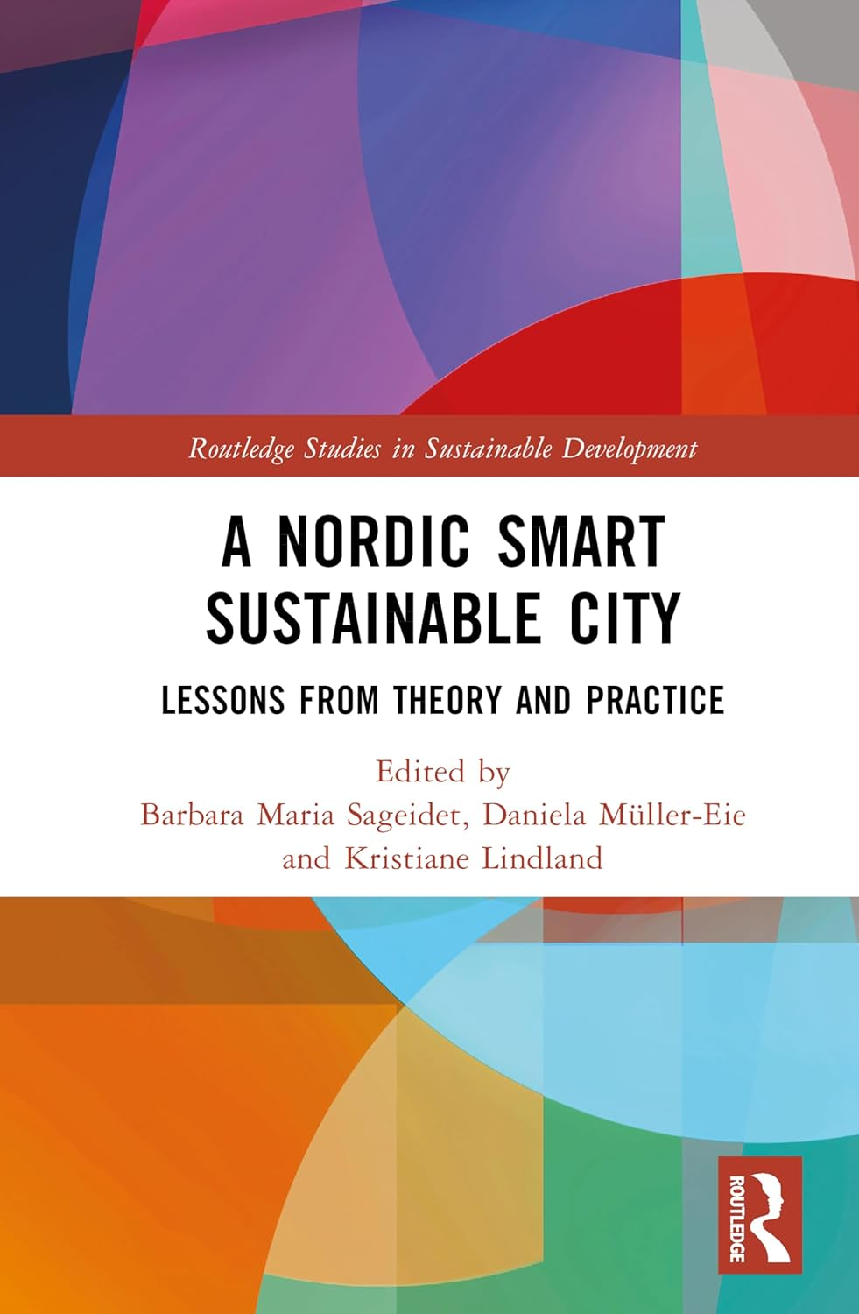In 2014, Stavanger Municipality became a lighthouse city in Triangulum, a Horizon 2020 project aimed at testing, sharing, and replicating smart solutions for energy and mobility through technological experimentation.
Blog post
The blogpost is written by

The ambition was to make the city “a little smarter, a little simpler, and a little better.”
As part of this initiative, Stavanger Municipality established a smart city office, the national smart city innovation cluster Nordic Edge was founded in Stavanger, and the University of Stavanger launched the Research Network for Smart Sustainable Cities. Just ten years later, the smart city office has been shut down, and funding for the research network was cut in favor of new strategic priorities. Only Nordic Edge remains.
Before these changes, however, 26 researchers and professionals managed to produce a joint publication reflecting on Stavanger’s journey as a smart city. The book A Nordic Smart Sustainable City – Lessons from Theory and Practice is an interdisciplinary collection of articles critically examining the smart city as both concept and reality. The authors explore tensions between theory and practice, process and substance, technology and society – and between “smart” and sustainability.
What Is a Smart City?
The book – like the research network – adopts a holistic and inclusive perspective on the smart city, addressing the concept’s first challenge: its broad definition.
Originally, a smart city was envisioned as one that uses digital technology and innovation to improve the city, public services, and residents’ quality of life. This includes everything from energy and water supply, waste management, traffic and transport, safety and emergency preparedness, information flow, administration and services, to education, healthcare, and property development – all aimed at making them “more intelligent, interconnected, and efficient” (Brown et al., 2020). The goal is to optimize resource use, increase productivity, and reduce climate and environmental problems in cities. At the same time, the smart city has also become a way to promote co-creation and participation, aiming to strengthen collaboration across sectors and between citizens and municipalities.
Thus, the smart city encompasses both “hard” technological solutions and “soft” process-oriented approaches. This breadth has evolved over time and offers clear advantages, but it also makes the concept complex – and at times all-encompassing. And if the smart city is everything, is it perhaps nothing?
The Smart City and Urban Planning
Planners have been particularly criticized for not being more proactive in smart city development (Clark, 2020; Karvonen, Cook & Haarstad, 2020; Shelton et al., 2015). This may stem from another challenge. Planning as a discipline is normative, strategic, long-term, directional, and goal-oriented. It is often driven rationally by gathering information and establishing a broad decision-making foundation. At the same time, planning is value-based, always context-dependent, and responsive to local conditions and needs.
The smart city concept, on the other hand, is exploratory, experimental, opportunistic, and often driven by possibilities rather than needs. Smart city projects are typically experimental, aiming to test solutions rather than understand how or why they work or what effects they have. They also focus heavily on replication and scaling, which often conflicts with planning’s emphasis on place-based interventions. These perspectives and approaches are very different and difficult to integrate.
Who Owns the Smart City?
Another central question is who feels ownership of the concept. In the literature, the smart city is often portrayed as a necessity, driven by the need for new ways to solve “wicked problems” (Goodspeed, 2015).
Planners recognize the value of technology and digitalization but may feel pressured to use the smart city concept to gain traction – not least because EU research and innovation funding has strongly promoted the “smart” focus (Späth & Knieling, 2020). This raises the question: Are smart city projects motivated by idealism (solving complex problems) or pragmatism (securing funding)?
Is the Smart City a Goal or a Means?
Planning has long operated within a framework of “means and ends” (Banfield, 1959). The smart city can sometimes appear as a goal in itself but is more often understood as a means. But if the smart city is the answer – what was the question?
The answer is unclear. It may involve promoting sustainable, safe, resilient, just, and healthy urban development. Operationalizing the smart city in this way makes it easier to integrate into existing planning theory and evaluate its effects. At the same time, it raises the question of whether the smart city concept is the most effective path to the goal – whatever that may be.
What Have We Learned?
How do you summarize 15 chapters from nearly as many disciplines and 10 years of smart city research? We tried by extracting lessons that highlight both strengths and weaknesses:
- Different disciplines use different terms and focus areas (technology vs. impact, optimization vs. exploration).
- Research projects have varied goals: some are exploratory, others critically reflective.
- Stakeholders operate with different time horizons (long-term planning vs. short-term testing).
- Documentation often lacks clarity on project origins, goals, and effects. Pilots are typically reported only when successful, with little reliable reporting or comparison to alternatives.
- The phenomenon of “smart-washing” can occur when the smart label is used to market conventional initiatives.
On the positive side, the smart city initiative has made Stavanger a more open arena for research and cross-sector collaboration. It has provided contextual understanding, concrete examples, and insights into complexity and nuance. Several projects have strengthened participatory processes, involvement, and co-creation. The smart city has also enabled interdisciplinary and cross-sector collaboration in a “quadruple helix” (public, private, academia, citizens). However, this requires time, resources, strong relationships, and mutual respect.
What Now?
The problems the smart city aims to solve remain. As Professor Jennifer Clark writes:
“After a decade of pilot projects and flashy demonstrations, though, it’s still not clear whether smart city technologies can actually solve or even mitigate the challenges cities face.” (Clark, 2021)
How do we ensure cities become sustainable, smart, healthy, safe, and resilient in an uncertain future? The smart city concept is fading, and new terms are emerging in its wake. But regardless of the path we choose, it is crucial to build on existing knowledge and use established collaboration structures – rather than starting from scratch.
*This blog post was translated from the original Norwegian version using Microsoft Copilot.
References
Banfield, E. C. (1959). Ends and Means in Planning. International Social Science Journal, Vol. XI(No. 3).
Brown, W., King, M., & Goh, Y. M. (2020). UK smart cities present and future: An analysis of British smart cities through current and emerging technologies and practices. Emerald Open Research, 2(4), 4.
Clark, J. (2020). Uneven Innovation: The Work of Smart Cities (s. 328 Pages). Columbia University Press.
Clark, J. (2021). What cities need now. MIT Technology Review, 124(3), 4–8.
Goodspeed, R. (2015). Smart cities: Moving beyond urban cybernetics to tackle wicked problems. Cambridge Journal of Regions, Economy and Society, 8(1), 79–92. https://doi.org/10.1093/cjres/rsu013
Karvonen, A., Cook, M., & Haarstad, H. (2020). Urban planning and the smart city: Projects, practices and politics. Urban Planning, 5(1), 65-68.
Shelton, T., Zook, M., & Wiig, A. (2015). The ‘actually existing smart city’. Cambridge Journal of Regions, Economy and Society, 8(1), 13–25. https://doi.org/10.1093/cjres/rsu026
Späth, P., & Knieling, J. (2020). How EU-funded Smart City experiments influence modes of planning for mobility: Observations from Hamburg. Urban Transformations, 2(1), 1-17.

